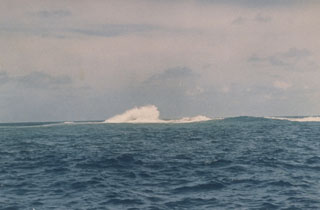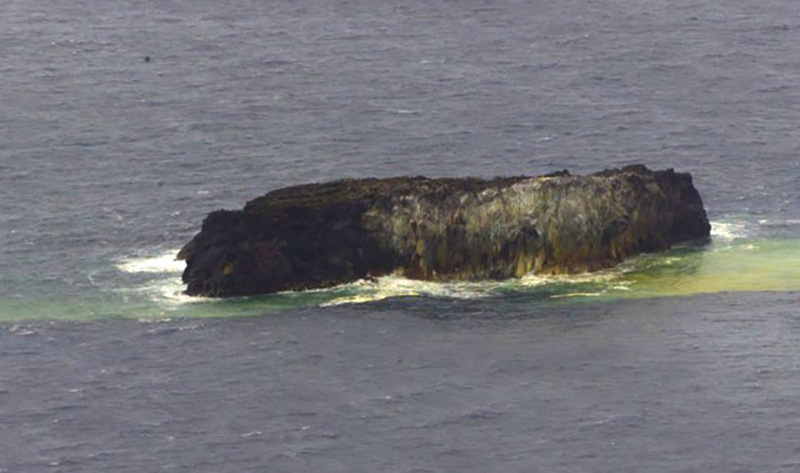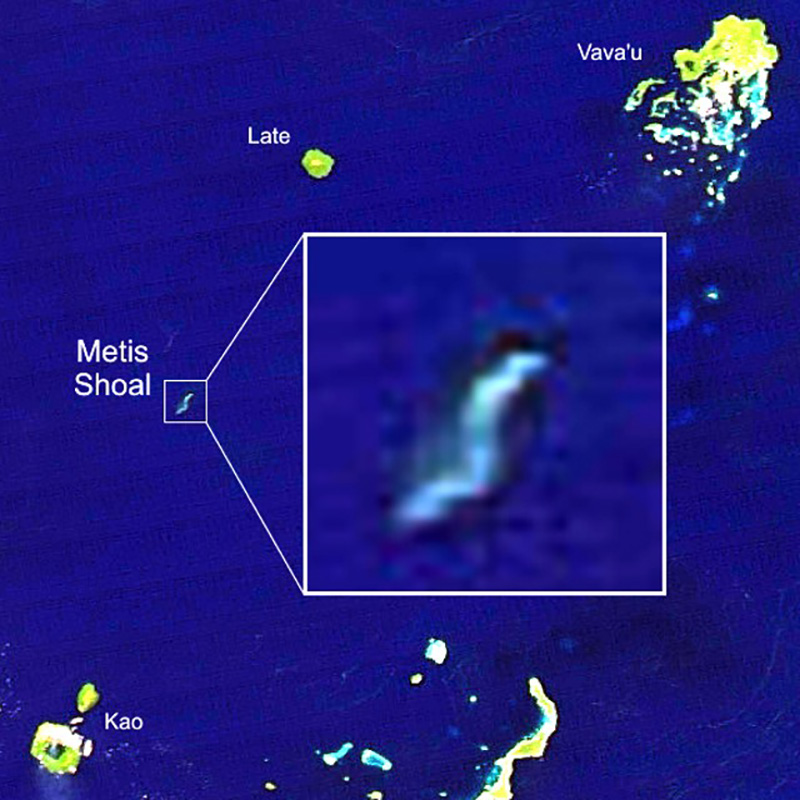Report on Lateiki (Tonga) — December 2006
Bulletin of the Global Volcanism Network, vol. 31, no. 12 (December 2006)
Managing Editor: Richard Wunderman.
Lateiki (Tonga) Island present in December 2006; discolored water
Please cite this report as:
Global Volcanism Program, 2006. Report on Lateiki (Tonga) (Wunderman, R., ed.). Bulletin of the Global Volcanism Network, 31:12. Smithsonian Institution. https://doi.org/10.5479/si.GVP.BGVN200612-243070
Lateiki
Tonga
19.18°S, 174.87°W; summit elev. 43 m
All times are local (unless otherwise noted)
On 7 December 2006 the Royal New Zealand Air Force (RNZAF) flew over the Home Reef and Metis Shoal area of Tonga at the request of volcanologists from the Institute of Geological & Nuclear Sciences (IGNS). At that time an island was present (figure 4), but it is not known if this is a remnant of the island built in 1995 (BGVN 20:06) or the result of later undocumented eruptions. Areas of discolored water were present adjacent to the island, the result of either erosion or fumarolic activity. Discolored water extending about 5 km SW from the location of the island was also observed in an Aqua MODIS satellite image taken on 15 September 2005 (figure 5).
Geological Summary. Lateiki, previously known as Metis Shoal, is a submarine volcano midway between the islands of Kao and Late that has produced a series of ephemeral islands since the first confirmed activity in the mid-19th century. An island, perhaps not in eruption, was reported in 1781 and subsequently eroded away. During periods of inactivity following 20th-century eruptions, waves have been observed to break on rocky reefs or sandy banks with depths of 10 m or less. Dacitic tuff cones formed during the eruptions in 1967 and 1979 were soon eroded beneath the ocean surface. An eruption in 1995 produced an island with a diameter of 280 m and a height of 43 m following growth of a lava dome above the surface.
Information Contacts: Brad Scott, Institute of Geological & Nuclear Sciences (IGNS), Wairakei Research Centre, PO Box 2000, Taupo, New Zealand (URL: http://www.geonet.org.nz/, http://www.gns.cri.nz/); NASA Earth Observatory (URL: http://earthobservatory.nasa.gov/).



